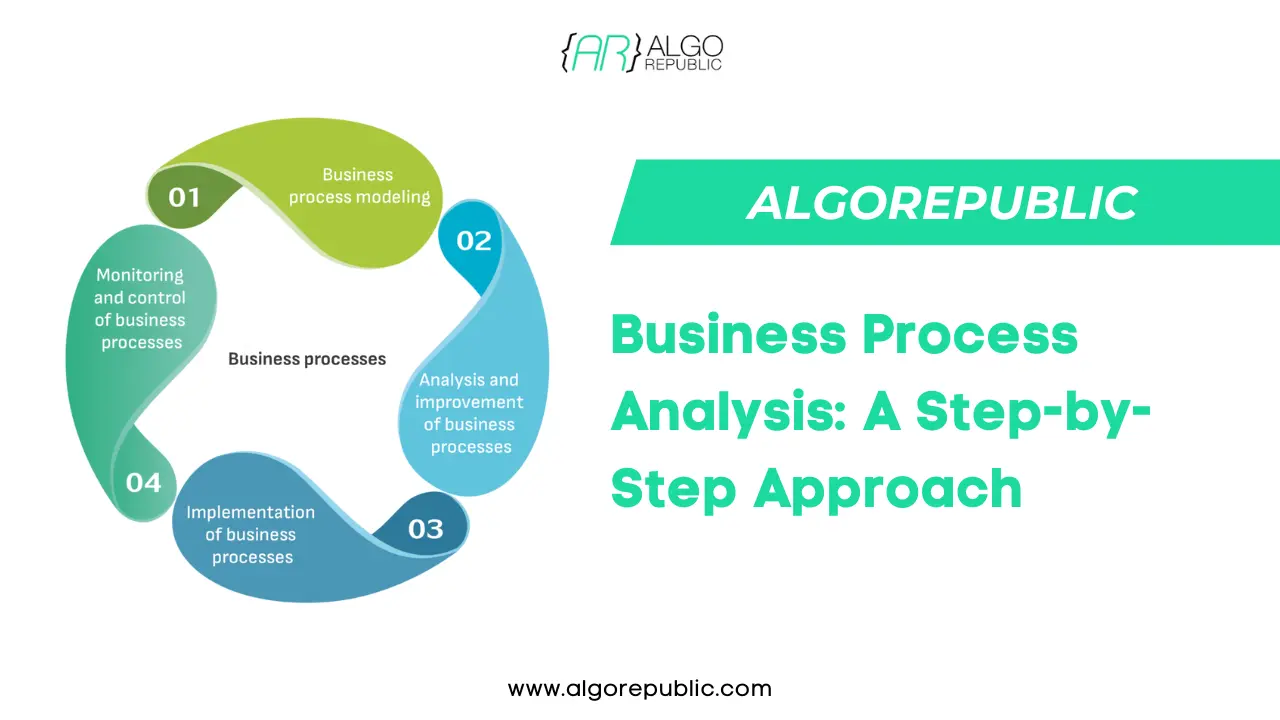Table of Contents
Businesses commonly use Business Process Analysis (BPA) as a source of achieving better efficiency, productivity, and overall performance. BPA is all about the analysis of current processes to identify any shortcomings or areas for improvement.
In this article, we will explore the critical components of BPA including its difference from Business Analysis (BA), how it aligns with Business Process Management (BPM), effective methods for conducting analysis using tools and techniques as well as its growing significance within today’s dynamic business landscape
What is Business Process Analysis
The basic approach of Business Process Analysis (BPA) is about understanding the operation of business processes within a certain business entity by identifying workflows, analyzing activities and resources that are part of the system. BPA basically helps to identify areas for improvement, bottlenecks or inefficiencies so as to optimize processes that will make possibilities for better business outcomes.
Business Process Analysis (BPA) Vs Business Analysis (BA)
While these both terms appear similar in nature, however their working and base is rather different when it comes to business operations. The primary concern of BPA is to inspect and enhance business processes while BA encompasses a more comprehensive scope that includes requirements gathering, stakeholder analysis, and solution design.
Key Differences Between BPA and BA
Scope: BPA’s main focus lies in analyzing and enhancing business processes whereas BA covers a wider range of areas such as business requirements, strategies, and solutions.
Focus: The emphasis of BPA is on understanding process workflows, pinpointing inefficiencies and proposing enhancements. On the other hand, BA emphasizes extracting and documenting business requisites and demands.
Outcome: BPA produces better processes and improved operational efficiency, while BA generates solutions that are in line with business goals and stakeholder requirements.
Business Process Management in Business Process Analysis
By supplying frameworks, methodologies, and tools to manage organizational processes effectively, Business Process Management (BPM) plays a significant part in the analysis of business procedures. BPM includes process modeling, automation, monitoring as well as continuous improvement – all aimed at enhancing efficiency and innovation which are aligned with BPA objectives.
Key Aspects of BPM in BPA
Process modeling: It involves the creation of graphical representations that illustrate how business processes operate, including their sequences, actions and interrelationships.
Automation: It involves the use of technological solutions to simplify and automate routine tasks, minimizing manual labor as well as mistake probabilities.
Monitoring and Analysis: Observing the performance metrics of processes while applying data analytics to identify trends, patterns as well as potential areas for improvement.
Continuous improvement: This involves the iterative refinement of processes, which is driven by feedback, performance insights and evolving business needs; with the ultimate aim being to achieve ongoing optimization.
How to Perform Business Process Analysis?
Here’s a brief overview of how an approach can be adopted in order to perform Business Process Analysis.
Steps to Perform Business Process Analysis
Objective Identification: Determine the aims and targets of the BPA project by taking into account factors such as effectiveness, expense reduction, enhancement in quality or contentment of customers.
Mapping Process: Visualize activities, inputs, outputs, and stakeholders involved in a process, use techniques like flowcharts, process maps or swimlane diagrams to map out existing processes.
Gather data: Collecting relevant data and metrics related to process performance is essential. This includes obtaining information on cycle time, throughput, error rates, as well as resource utilization.
Analyze Procedures: Assess the effectiveness of processes, pinpoint hurdles and areas where there is unnecessary repetition using methods such as root cause analysis or value stream mapping to identify areas for improvement.
Suggest Solutions: Provide suggestions on enhancing processes, with regard to elements including automation, reengineering, standardization or reallocating resources.
Implement Changes: Gradually integrate approved changes while providing sufficient communication, training and support to stakeholders impacted by the adjustments.
Keep track and modify: Keep a continuous tab on the operational efficiency after implementation, collect feedback, and make necessary modifications to uphold progress while dealing with fresh obstacles.
Effective Business Process Analysis Methods
Value Stream Mapping: This is a method of illustrating complete procedures to identify wastage, ineffectiveness and potential opportunities for improvement.
Root Cause Analysis: This method aims to explore the fundamental reasons behind process issues or failures in implementing specific solutions.
Benchmarking: This method revolves around bringing in contrast the performance of processes with industry standards or best practices. This helps to identify areas for improvement and gaps.
Six Sigma: This method is known for enhancing process quality with the help of statistical flows by bringing down variation and defects.
Lean Methodology: This method helps to improve efficiency and enhance customer value by eliminating wasteful practices and ensuring the better use of resources.
Tools and Techniques for Conducting BPA
Process Modeling Software: This tool, such as Microsoft Visio, Lucidchart, and Bizagi, helps companies to create a graphical presentation of their processes and analyze them graphically.
Workflow Automation Tools: There are several workflow automation tools like UiPath, Microsoft Power Automate and Zapier.These are available for businesses to use. Such platforms help to streamline workflows and process repetitive tasks on its own.
Data Analytics Tools: Businesses can examine process performance data and gain actionable insights with the use of analytics tools like Tableau, Power BI, or Google Analytics.
Simulation software: Tools like Simul8 or Arena can be utilized to create virtual models and conduct testing of process changes, prior to their actual implementation.
Collaboration platforms: Platforms such as Microsoft Teams, Slack or Asana aid in easing communication and collaboration amongst stakeholders by coordinating BPA activities and sharing findings.
Importance of Automation in the Today’s Business Landscape
If you are a thriving business in this modern age, business process automation has become a crucial tool for improving efficiency, scalability and agility. By automating repetitive tasks and standardizing processes, organizations can bring down operational costs whilst limiting the occurrence of errors and rapidly making time-to-market delivery happen. Moreover, it helps in easy integration between systems and applications while perfectly streamlining data flow to enhance cross-functional collaboration.
In the context of Business Process Automation (BPA), automation helps companies to achieve process improvements efficiently by using technology as a catalyst for sustainable growth that delivers competitive advantage.
Looking to automate your workflows in the ebay way possible? AlgoRepubic is here to help! Let’s get you started today with our customized business automation solutions that takes your business to the next level.



